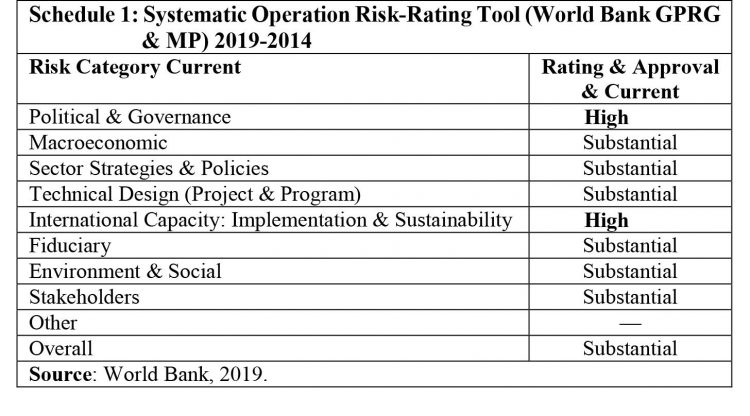Introduction
Today’s column has two principal aims: One is to wrap-up the overall discussion on spending expected windfall petroleum revenues on Government of Guyana (GoG) designated priorities. And, the other, is to address the third and final remaining set of GoG priorities, having already considered the other two. To recall, I have identified three categories of GoG priorities, namely, the well underway; the long-term; and, the annual to medium-term priorities. Thus far, I have considered the first two listed sets and shall discuss the third set today.
These three categories of priorities are not represented in my columns as entirely discrete. The three blur into each other, if only because the categories I have identified, are differentiated in terms of their time periods. Therefore, delays in some of the well-underway priorities may result in their not being introduced concurrent with First Oil. Similarly, some medium-term priorities might well be delayed, and delivered only over the long-term. Additionally, continued crude oil “finds” offshore Guyana might well impact outcomes!
Annual to Medium-Term Priorities
The annual to medium-term priorities, fall in-between the time frame of the two other sets of priorities. Consequently, I had advanced the view that, Guyana’s annual national budget is going to be the medium through which these annual to medium-term priorities are delivered. Further, because the GoG is in “regular (continuous) consultations with key international financial institutions (like the International Monetary Fund, IMF; the Inter-American Development Bank, IADB; and, the World Bank, WB), its spending priorities will be inextricably intertwined with the official financial, technical and policy advice these institutions provide.
As a rule, this support is mostly provided to the GoG by the IADB and the WB in the context of medium-term projects that are formally agreed to with the GoG. Alternatively, (particularly the case of the IMF) that institution publishes a routine “Concluding Statement” after each mandatory Annual Article IV Mission. This Concluding Statement frames Guyana’s annual to medium-term outlook. For readers benefit, the two following Sections provide current examples (2019) from both the WB and the IMF.
World Bank: GPRG & MP
The WB has a major medium-term project for Guyana’s expected oil and gas sector. It is termed: Guyana Petroleum Resources Governance and Management Project, GPRG & MP. This project runs from 2019 to 2024. The resources involved total approximately, US$20 million. The project’s stated development objective is to “support the enhancement of legal and institutional frameworks and the strengthening of the capacity of key institutions to manage the oil and gas sector in Guyana”. The project has four principal components, namely: 1) Enhancement of Legal Framework and Stakeholder Engagement 2) Capacity building of key institutions 3) Enhancement of fiscal management and 4) Project Management and Preparation facility. The WB’s systematic operations risk-rating tool reveals that the ratings on its approval for all categories of risk in the project are either High or Substantial. These data are shown in Schedule 1.

IMF: Article IV Mission Statement, 2019
Given the IMF’s focus on macroeconomic management, its 2019 Article IV Guyana Mission highlighted the economic management challenges that arise from windfall petroleum revenues in the coming decade of the 2020s. The Mission made three major overall economic diagnoses.
First, economic growth will continue to strengthen in Guyana. All the major economic sectors (2018) are expected, going forward, to share in a broad-based expansion of economic growth. Second, export performance has weakened recently, and imports (especially high valued added) have grown in recent years, (on account of the emerging oil and gas sector). This has led to a current account deficit of 17.5 per cent in 2018. In the face of the above Guyana’s public finance nevertheless improved.
Second, the 2019 Article IV Mission predicted: “Guyana’s medium-term prospects are very favourable”. And, because of this it has supported continued efforts to strengthen measures aimed at improved institutional, governance and management practices, in line with the WB 2019-2024 Project discussed above. It goes on to give support for current GoG efforts towards transparency.
Linked to this, the 2019 Article IV Mission also addressed specific fiscal provisions of Guyana’s Production Sharing Agreements, PSAs, (like “ring-fencing”) and focused on the need for continued stability of Guyana’s financial sector, control of money-laundering, the financing of terrorism and transparency.
The final thrust of the Article IV 2019 Guyana Mission, was on: what it termed as “structural reforms [that] are needed “to support economic diversification [as well as] inclusive and equitable growth”. The 2019 Article IV Mission identified infrastructure bottlenecks, shortages of skilled labour, weak communications and services, as well as social and environmental deficits. The Mission claimed that all of these need urgent attention.
Conclusion
In conclusion, I repeat my two main observations. First, all the GoG priorities identified in recent columns have been acknowledged as such by the GoG itself. Second, it is precisely because of this self-identification that I hold the firm position that: all these priorities must enjoy pride of place in implementing public spending by the GoG. Indeed, this position must hold true for all elected governments, which benefit from windfall petroleum or other revenues. This is, in my view, a governmental responsibility. There is no other option!
Next week I start consideration of Guidepost 3 in Part 2 of Guyana’s Petroleum Road Map. That Guidepost focuses on the “top ten economic challenges” developing countries, like Guyana, with large emerging petroleum sector face, based on historical experiences.





